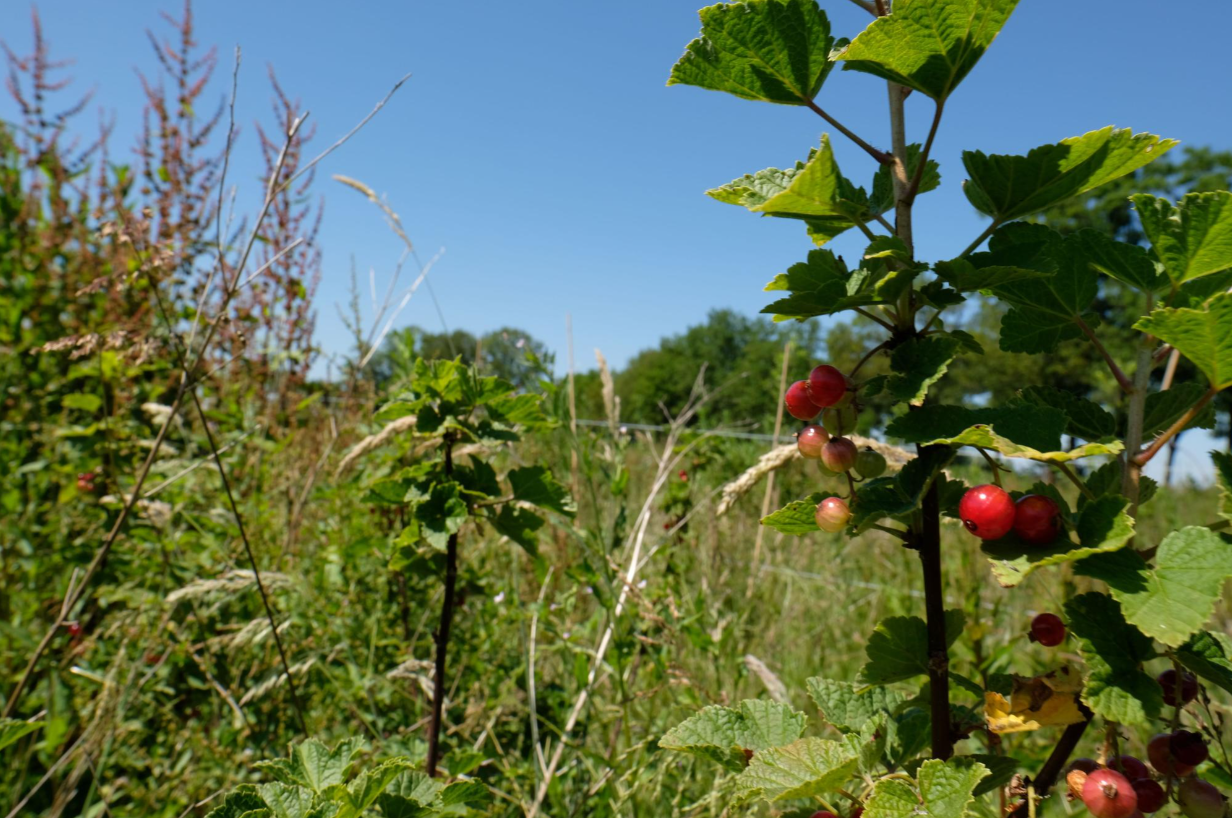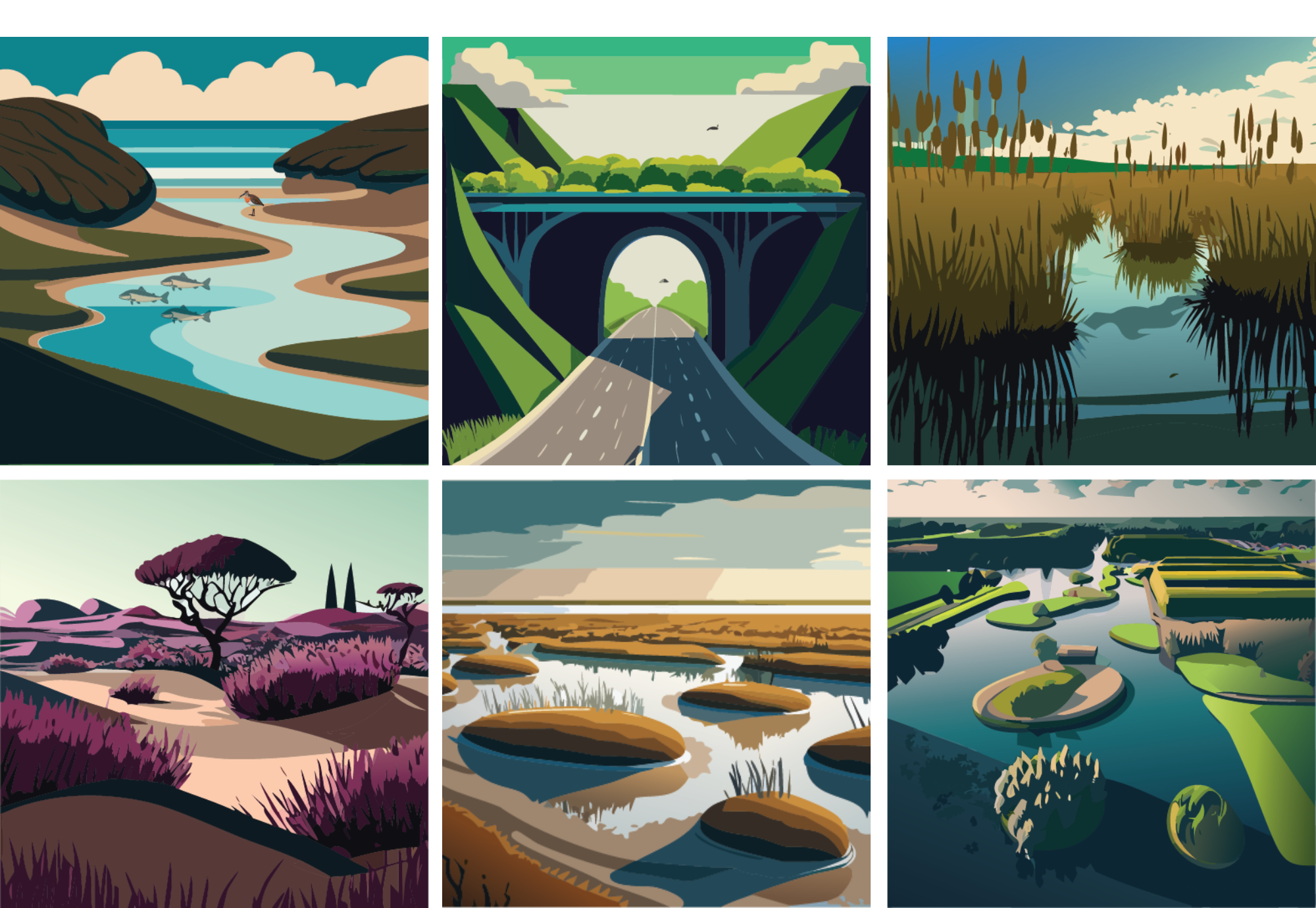Two hundred primary school pupils from grades 6, 7 and 8 came to Aurora yesterday afternoon for the Children’s University. Two WUR scientists guided them through an imaginative exercise: envision what the Netherlands might look like in the year 2120.
Most of the children signed up on their own initiative and individually, while some came with classmates or friends. This year, a full school class from Ede was also invited by the organizing Wetenschapsknooppunt. Many of the pupils there come from families who cannot easily afford extracurricular activities. Thanks to an arrangement with the municipality, they were able to attend free of charge. As the entire class had to participate, a few children seemed less thrilled to spend their Wednesday afternoon in a lecture hall.
Time travellers
WUR researchers Marlies de Ree and Joyce Zwartkruis – who introduce themselves as ‘climate and nature researchers’, for this occasion – welcome the young participants. ‘Why is it important for the university to think about primary school children too?’ Zwartkruis asks . The answer: ‘Inspiration! We want to share what we are researching with everyone. Okay, now raise your hands if you want to travel with us to the year 2120! A few mischievous ‘no, I don’t want to’ voices echoed from the back, but most hands shot up.
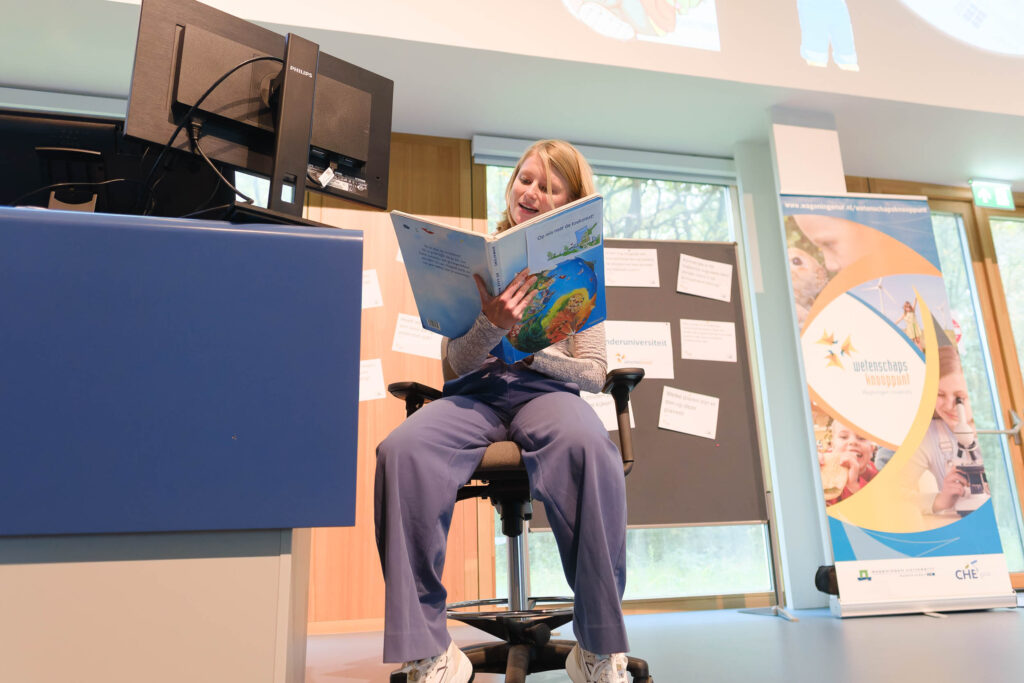
As soothing nature and birdsong fill the room, De Ree reads a poetic story describing what the city, sea, countryside and rivers might be like in 2120. What they might smell like, what you could see, and how it might feel to walk there barefoot. The room gradually falls silent as the pupils listen attentively. ‘Then’, she concludes, ‘we wake up again in 2025, with the challenges of today.’
To illustrate to the children that the climate is changing, Zwartkruis shows them the so-called climate barcode. ‘Blue means it’s colder than average, red means warmer. We started blue in 1970 and are getting more red every year.’ Meanwhile, the biodiversity barcode is also slowly shifting from green to grey. Still, she ends on an optimistic note: ‘Many solutions can help both climate and nature.’
When registering, the children had been asked to submit a question they might have about the future. One pupil wants to know if potatoes would still exist in 2120, because he loves chips so much. Another asks whether Wageningen would stay safe if the water levels rose. Zwartkruis reassures them: Wageningen is far enough inland to keep its feet dry.
Imagination
Then it is time to let their imaginations run wild. Black-and-white videos appear on the screen: children playing outdoors in dresses, farmers working with their hands. ‘Real or fake?’ asks one of the children in the audience. Van Ree explains that these images are real – from the 1920s, but coloured in later. ‘Back then, only six in a thousand people had a car: perhaps none of your classmates’ parents would have had one. We can learn from 100 years ago when we think about 100 years ahead.’
The group then splits into two: one half stays in the lecture hall for a discussion on propositions, while the others go to a classroom nearby to draw their vision of the future. From an imaginary helicopter, they sketch their hometown in 2120 – with room for greenery, water, homes, transport, animals and food. ‘I want to live in a green, pleasant environment that is also modern’, writes one girl down.
Both the lecture hall and the drawing room buzz with energy. The adjustable tables and chairs prove irresistible to many, but amid the fidgeting, colourful drawings emerge – treehouses, floating homes, electric cars and community vegetable gardens. Plenty of green and blue between the buildings, islands with several facilities, and landscapes where farming and nature blend together.
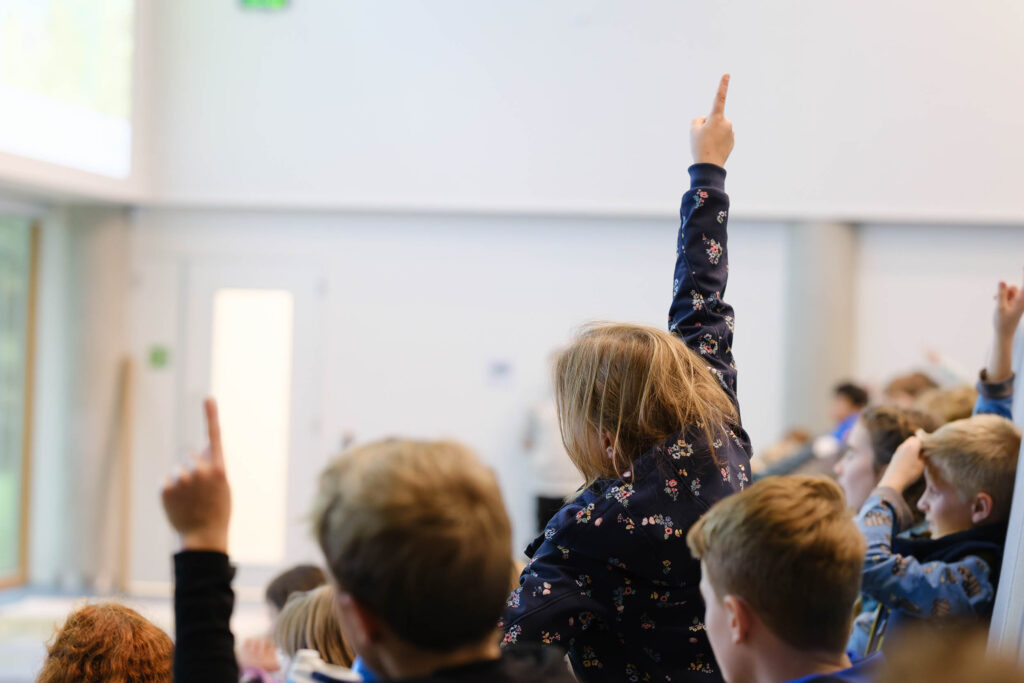
Green city, good playground
Back in the lecture hall, children face choices: should houses be surrounded by nature so that people and animals can live together, or should nature remain separate? ‘Together’, one girl says firmly. A classmate warns humans might disturb the animals. ‘And what about dangerous animals, like the black widow?’, another adds. Living in nature is beautiful, they conclude, but also risky – though few seem to know that the chance of encountering a black widow in the Netherlands is very small.
A new proposition follows: will the city be green or smart in 2120? A boy thinks for a moment and then says: ‘Looking at politics today, I don’t really see a green city with lots of trees, plants and animals. But I would like that, because you can play better in a green city.’
Small, big steps
Teacher-training students – who are supporting the scientists – take photos of the drawings: this is how the next generation envisions its ideal world. Zwartkruis wants to know if the pupils still have any tips for researchers. ‘Can’t we make robots that run on solar power?’, one suggests.
The scientists wrap up with the encouraging message that nature offers many solutions and that small steps together can add up to big steps. With a certificate and a goodie bag from the Wetenschapsknooppunt, the children leave the building with their drawing. ‘Mine turned out pretty well’, says one boy proudly. Outside Aurora, parents with little brothers and sisters are waiting, while the WUR students who are studying for their exams in Aurora at that moment, seem unimpressed by the cheerful chaos around them.
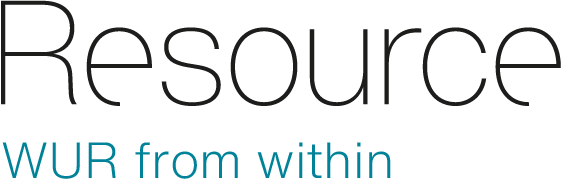
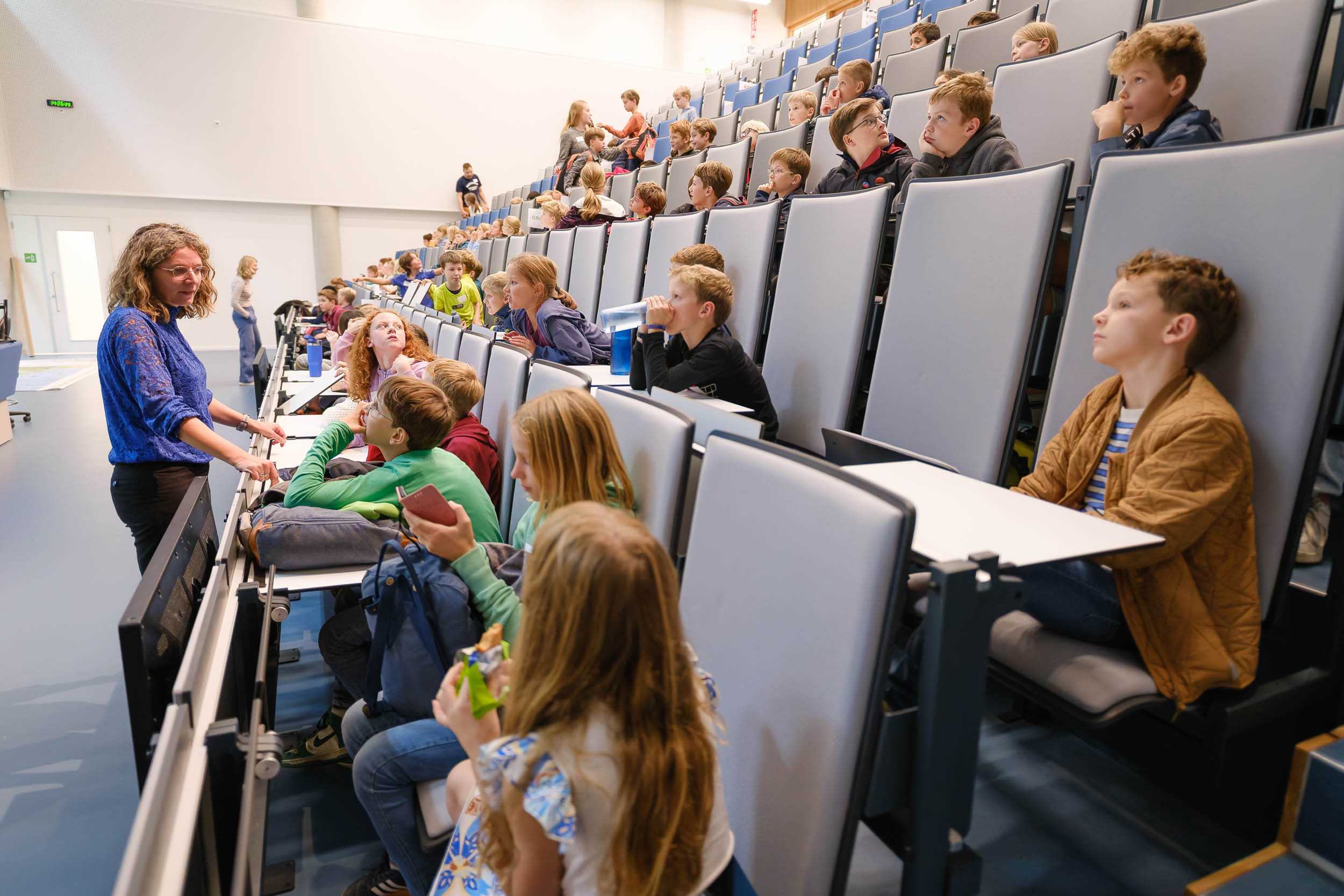 Tweehonderd basisschoolleerlingen kwamen naar de Kinderuniversiteit in Aurora. Zij gingen mee op tijdreis naar 2120. Foto Guy Ackermans
Tweehonderd basisschoolleerlingen kwamen naar de Kinderuniversiteit in Aurora. Zij gingen mee op tijdreis naar 2120. Foto Guy Ackermans 
